Wild mints are prima donnas: Once on stage they hate to get off. Locally I would expect to see Horsemint, Monarda punctata in full bloom next month but it has pushed the season and can be found now. It can flower for several months. This week I saw a nice stand along a bike trail in south Vousia County, exactly where one would expect to find it: On a dry bank up from the trail. You can also find it in the same area near roads especially roads that cut through a sand hill. Look for the showy pink bracts. If you want to read about Horsemint you can go here. Next week I’ll be seeing the bright red Monarda didyma in the Carolinas. No doubt there is a showy mint near you. And if you want to see some of the plants I’ve been identifying along local bike trails and read about recumbent trikes you can visit The Green Deane Machine on facebook.
We shouldn’t forage along railroad tracks and you can blame it all on the Russian Thistle. This species, best known as the tumble weed that rolls across the wild west in movies, came with immigrants to southern South Dakota in the early 1870’s. Best guess is it contaminated their flax seed. By 1895 it reached New Jersey and California. The question was how? A professor who worked for the Department of Agriculture figured out the trains were spreading the seeds coast to coast. It was a remarkable idea at the time and brought him much fame. His solution to the unintentional distribution? Kill plants long railroad tracks. Thus began the practice of putting down some mighty and long-lasting chemicals to kill weeds sprouting amongst the iron rails. Railroad tracks are a good place to find seeds to take home and plant but not to find food. There have even been a few reported deaths from foraging along rail road tracks.
Also seen on bike trails and blooming now is Goldenrod. It is a bit of a treasure hunt and disappointment. The treasure hunt is that one species is better than all the rest for tea, Solidago odora. It does grow here, has an anise flavor, but is hard to find. It’s reported in most counties but is not common. Goldenrod grows in about half of the United States, southwest to northeast. Other Goldenrod species can also be made into tea, perhaps all of them particularly for herbal applications, but they don’t taste anywhere near as good. In fact, after the “Boston Tea Party” of 1773 halted tea imports colonialists drank Goldenrod tea and even exported some to China. It did not catch on. However, every time I see a Goldenrod I pull off a leaf and crush it hoping to detect the tell-tale anise smell. It’s a golden treasure hunt.
Hibiscus moscheutos is one of my mystery plants and ranges over much of the United States except for the high plains states and the west coast (and my native state of Maine.) The Swamp Rose Mallow is blossoming now in damp spots locally particularly along the St. John River. I think its blossoming is more related to the shortening of the days than the weather per se. It has five separate petals united at the base and five green sepals. The blossom lasts only one day. They range from cream with a red or purple center to pale pink. It has a sticky, stringy juice. The question is, as a Hibiscus, are the blossoms edible or other parts? I have never found a reference to edibility. In fact, it seems only one Native American tribe used it medicinally, the Shinnecock who lived on what we now call Long Island. They used it for bladder infections. European settlers, however used the species for a wide variety of ailments. As several writers attest it “abounds with mucilage.” It is always interesting when such a wide-spread plant is rarely mentioned in the ethnobotanical literature. That could mean it wasn’t used, we didn’t ask, or they didn’t tell us. To read more about mallows go here.
There will not be any newsletters for the next two weeks as I will be hiking in the Carolinas along the Appalachian Trail. While there I hope to visit Forager Emeritus Doug Elliott and family, and, Mushroom Expert Ken Crouse. This written labor of foraging love will resume at the end of August. As for upcoming foraging classes they are:
Saturday, August 29th, Mead Garden: 1500 S. Denning Dr., Winter Park, FL 32789, 9 a.m.
Saturday, September 5th, Colby-Alderman Park: 1099 Massachusetts Street, Cassadaga. Fla. 32706, 9 a.m.
Saturday, Sept 12th, Red Bug Slough Preserve, 5200 Beneva Road, Sarasota, Fla, 34233. 9 a.m.
Saturday, Sept. 19th, George LeStrange Preserve, 4911 Ralls Road, Fort Pierce, Fla, 34981. 9 a.m.
Saturday, Sept. 26th, Spruce Creek Park, 6250 Ridgewood Ave. Port Orange, 32127. 9 a.m.
For more information about classes go here.
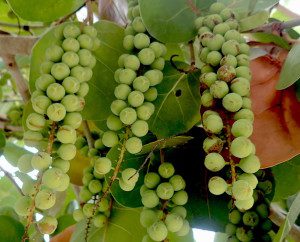
Do you know what these unripe wild edibles are? You would if you read the Green Deane Forum. Photo by Green Deane
Need to identify a plant? Looking for a foraging reference? Maybe you have a UFO, an Unidentified Flowering Object, you want identified. On the Green Deane Forum we — including Green Deane — chat about foraging all year. And it’s not just about warm-weather plants or just North American flora. Many nations share common weeds so there’s a lot to talk about. There’s also more than weeds. The reference section has information for foraging around the world. There are articles on food preservation, and forgotten skills from making bows to fermenting food. Recent topics include: Lawn Weed? Weeds of NJ. Vine ID Please. Another Weed. Is Cymopterus macrorhizus edible? Name This Bark. Wood Potato? Canadian Horseweed. Fried Greens? Fuzzy Ganoderma? Shaggy Top But…? Red Maple? Harvested Honey. A Few Texas UFO’s. Weed on Long Island. Fern? Hello From Cypress Texas. My Chaya, and Elderberry Blossoms. You can join the forum by clicking on the button on the upper right hand side of this page.
This is newsletter 173.
PS: I might be interested in renting a two-bedroom house with storage or a three-bedroom house south of mid-state and not in-town starting this fall. Liked to get away from lawns and neighbors. If you know of any possible places please let me know.

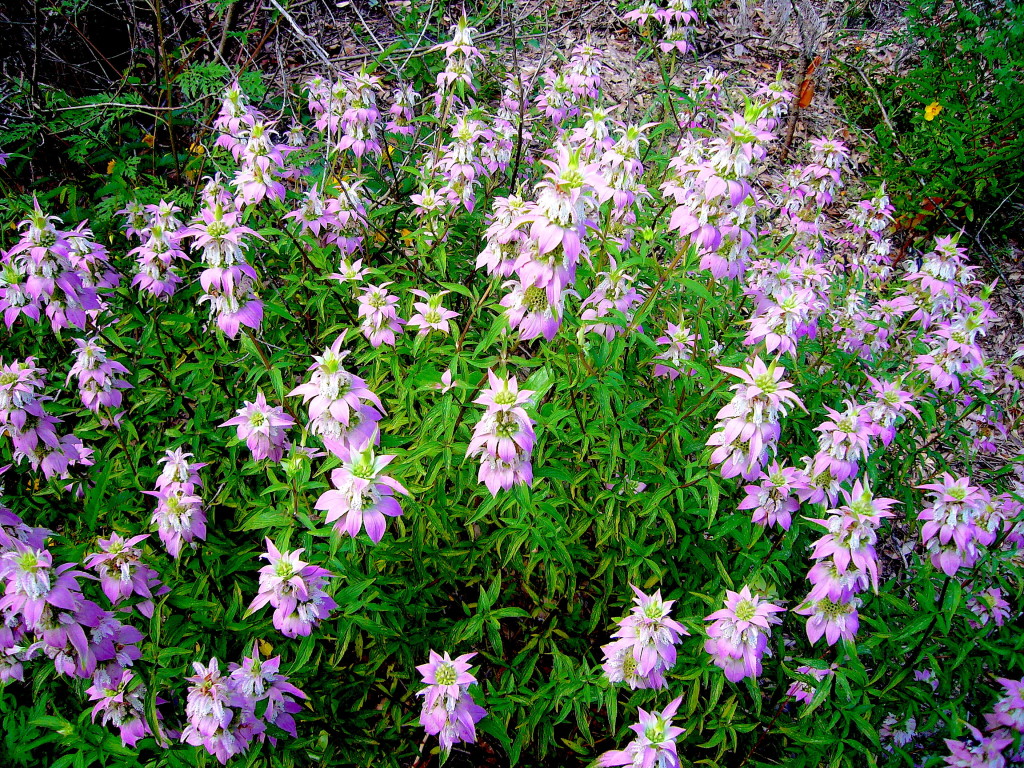

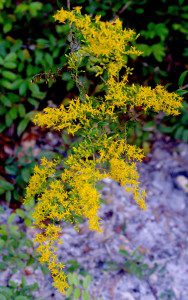
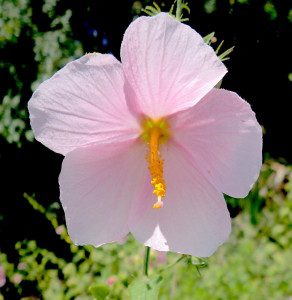
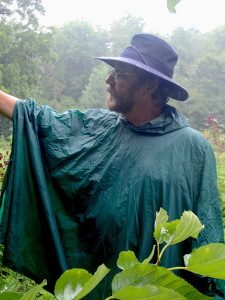

I have also wondered about the swamp rose mallow. It’s interesting that info is so very thin.
Have a marvelous time on the trail.
Sea Grapes!
Sea grapes
or poke berries
Yep, sea grapes, just ate some today. A few are ripe on Captiva.
Do you ever come to Louisiana?
Too bad you were not offering an Appalachian Trail hike foraging class……
I love the fragrance of Horsemint plant. To keep it fresh, I insist on replanting it in my garden wherever I find suitable space for it. How kind those leaves; only by a delicate touch you feel relaxed and comfortable. That is why Yemenese people follow the habit of gifting the crowded Friday prayers in mosques with the plant especially when it is blossoming. I’ve attempted the same thing after my return home from Sana’a here in Sudan. That said, I must tell of a relative of mine who is allergic on approaching the plant. Thank you for the info. about the plant and the constituents it contains. While some web reports claim that the use of “ thyme oil” may result in allergic reactions even in dilute form thus causing dermatitis or inflammation of the skin, others advocate the reverse positive use e.g of “oregano oil” derived from the leaf of Organum vulgare as having antihistamine properties.
Funny you mention the swamp rose mallow and goldenrod in the same post. Hibiscus moscheutos is prolific on my road, as is S. odora. We live in tidal wetlands in Eastern Maryland, and the wild Hibiscus grows in the ditches with brackish water. I have eaten the raw leaves, flowers, and capsules with abandon, with no ill effect. The leaves are usually mild, akin to goosefoot or violet (albeit meatier, and slightly rough). Love the newsletter!